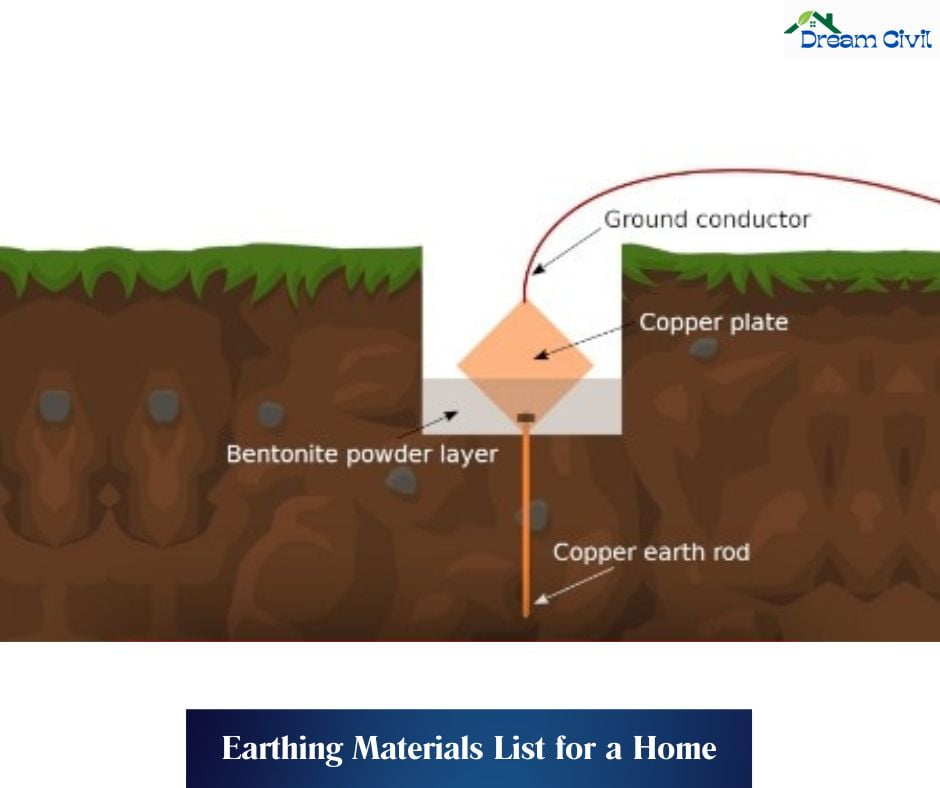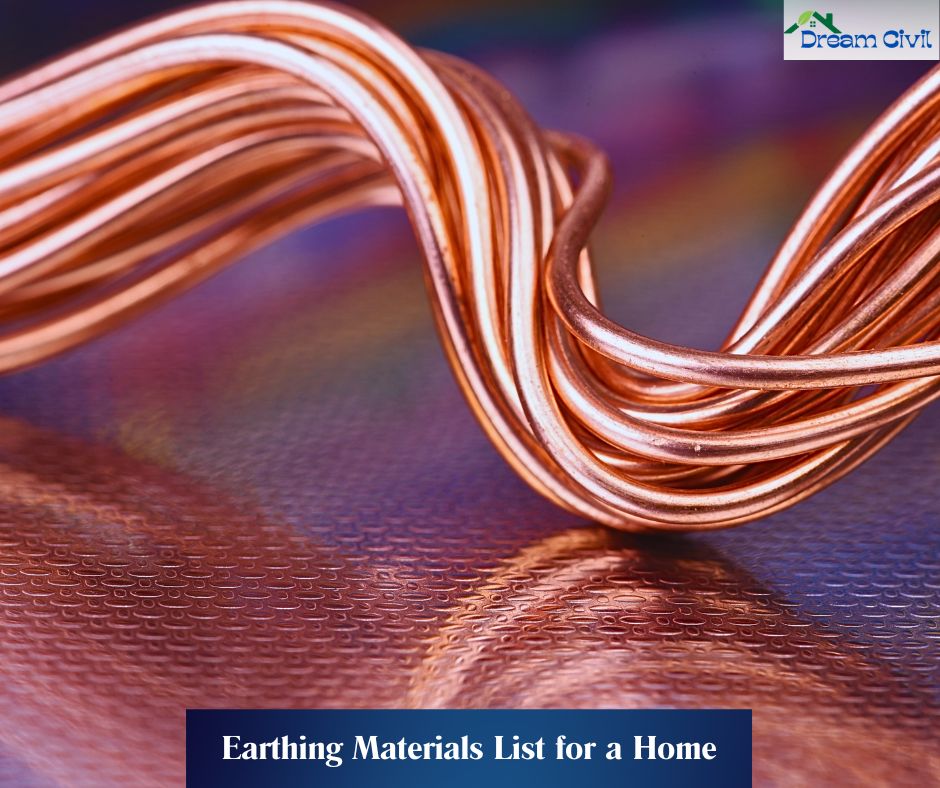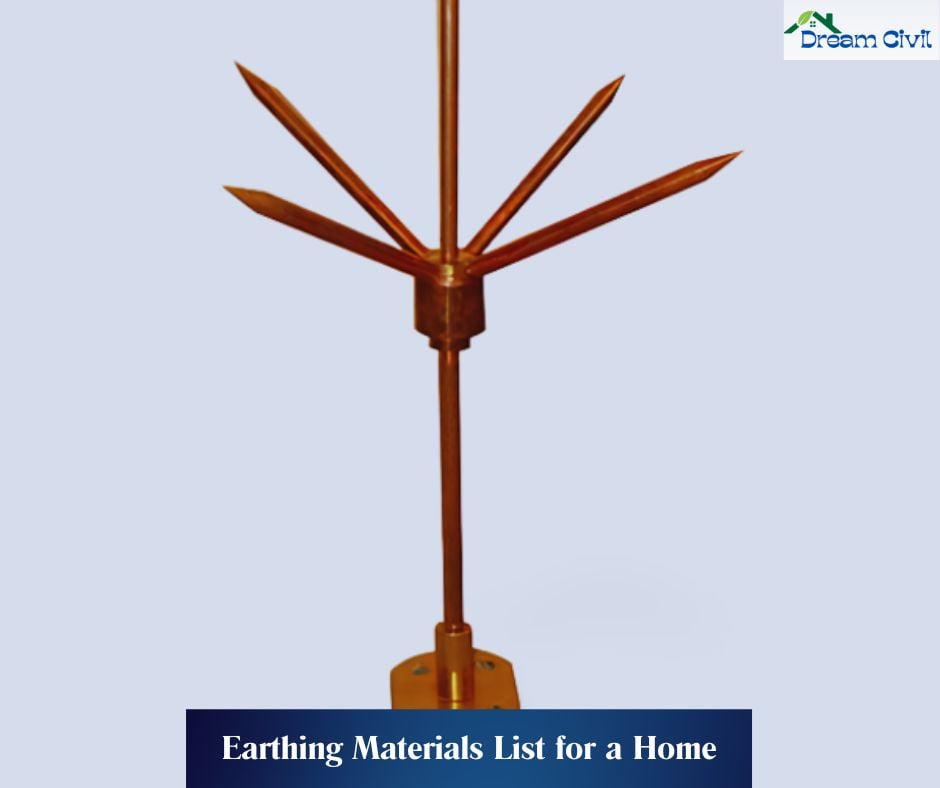Table of Contents
This article will explore 100% complete information about the 13 Most Beneficial Earthing Materials List for a Home, including the miscellaneous advantages of earthing. It will be the best source of knowledge on earthing material to clear your curiosity and satisfy your individual needs and necessities.
1. What is earthing?
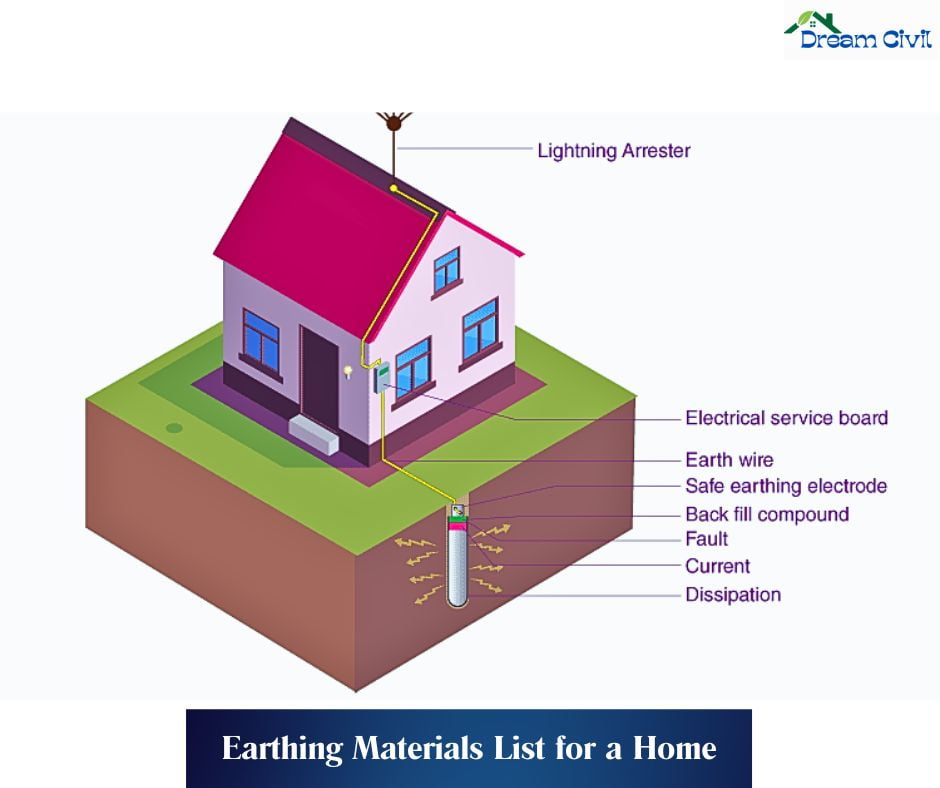
Earthing is one of the most essential processes in electrical systems that transfer electrical power to the earth via a lower-resistance wire.
This is accomplished by delivering a secure route for releasing electrical power during a defect.
The selection of a lower-resistance earthing wire confirms that the route for leakage of fault current is minimized and lowers the chance of electrical hazards.
Earthing is vital to ensure the security and accurate functioning of electrical systems.
| Read More: 20+ Best Useful Asphalt Testing Equipment List. |
2. Why earthing material is essential?
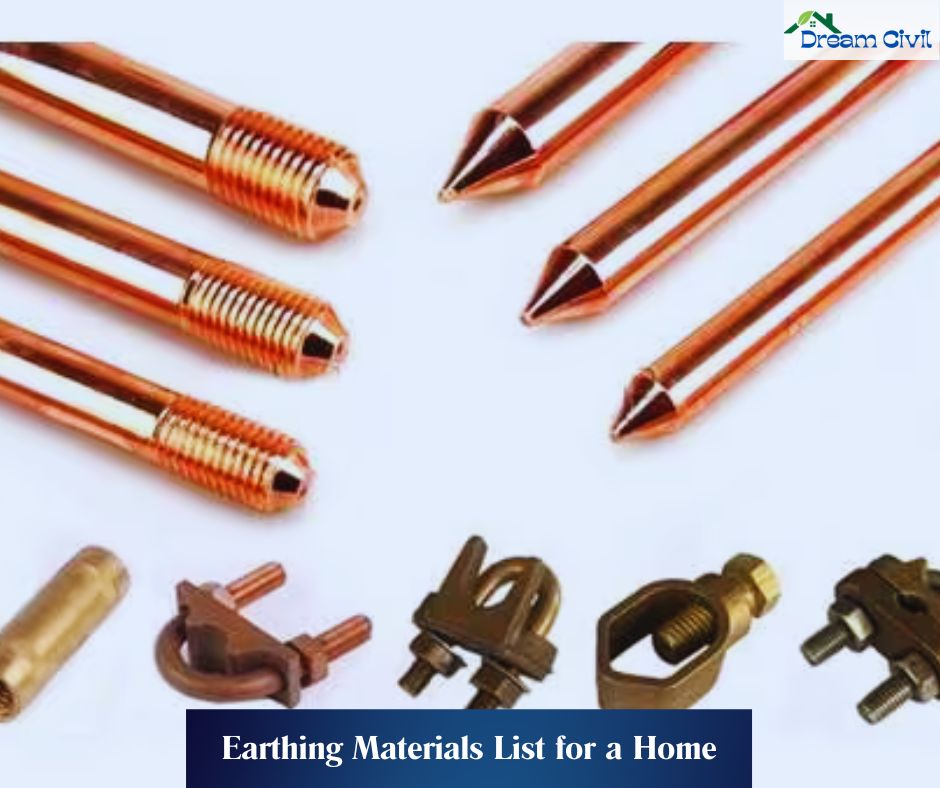
Earthing, typically considered grounding, is a vital safety effort that protects one from electrical hazards.
Grounding the electrical system helps to redirect electrical currents safely, reducing the risk of shocks and fires.
It is necessary to understand that the typical earthing elements and strategies utilized may differ depending on regional electrical codes and regulations.
3. 13 Beneficial Earthing Materials List for a Home
| Material | Images | Description |
| a. Copper Rod |
| Utilized for grounding. |
| b. Grounding Plate |
| Used in place of or in complement to a copper rod and delivers a more extensive surface space for grounding. |
| c. Earthing Strip or Wire |
| Connect different grounding elements and ensure a steady path for current flow into the ground. |
| d. Earth Pit |
| Supplies a space for the grounding element. |
| e. Backfill Compound (Salt + Charcol) |
| Backfills the earth cavity after the grounding element is lodged. |
| f. Clamps and Connectors |
| Used to connect and hold together wires or several components of earthing. |
| g. Test Equipment |
| This device is utilized to test the effectiveness of the earthing system. |
| h. Lightning Arrester |
| Saves the residence from lightning strikes. |
| i. Junction Boxes |
| Operated for assembling safe connections. |
| j. Warning Signs |
| It is used to alert people about the existence of grounding components and control spontaneous deterioration. |
| k. Grounding Fault Circuit Interrupter (GFCI) |
| Glimpses a leak of electrical current and prevents shocks. |
| l. Conduit |
| Saves electrical wires from deterioration. |
| m. Electrical Tape |
| Insulates wire pinnacles and saves junctions. |
5. What are the types of earthing?
I. Plate Earthing:

Plate Earthing is an earthing system where a copper or galvanized iron plate joins all the earthing conductors to the earth.
The plate is planted vertically at a depth not less than 3m from the base level.
II. Pipe Earthing:

Earthing pipes are a wide-used safety measure that controls electrical hazards like shocks and fires.
It dissipates electrical faults safely.
III. Rod Earthing:

Rod earthing is a copper rod with a galvanized steel pipe set upright in the ground to decrease the resistance of the earth to the best value.
IV. Strip Earthing:

Strip earthing transfers current to the ground utilizing a lower-resistance metallic strip. 6mm hot-dipped galvanized strips are typically employed for this objective.
6. What are the benefits of earthing?

I. Electrical Safety: It safeguards individuals from electric shocks and protects electrical tools by redirecting harmful currents away from sensitive components.
| Read more: 15 Most Effective Construction Safety Training For Homeowners. |
II. Stability of Electrical Systems: It balances the voltage equilibrium and lowers electromagnetic interference.
III. Fire Protection: It decreases electrical fire risks, provides a supervised path for defect currents, and secures wire and elements from overheating.
IV. Tools Performance: It helps electrical appliances perform perfectly by supplying a voltage concern point and reducing quick voltage influence.
V. Lightning Safety: It scatters lightning energy and saves systems and tools from harm.
VI. Static Electricity Dissipation: It averts static buildup and reduces the chance of sparks and electrical firing.
VII. Personnel Safety: It ensures personnel safety and security where electrical tools and machinery are utilized.
VIII. Observation with Regulations: It must comply with electrical regulations and criteria for protection and trustworthiness.
IX. Corrosion Prevention: It prevents corrosion in metallic structures such as pipelines and communication towers by evenly distributing electrical charges.
X. Environmental Protection: It decreases environmental influence by controlling risks like blazes and leaks.
XI. Signal Integrity: It boosts signal quality and averts interference in electronic techniques.
| Read Also: Surveying Tools List |
| Verified Article By Er. Madhu Krishna Poudel |



